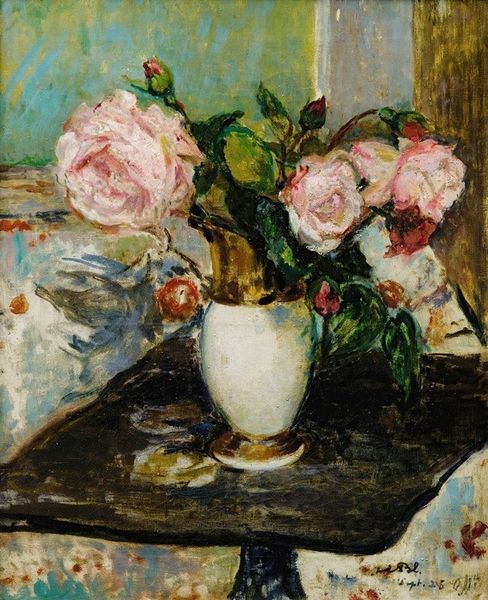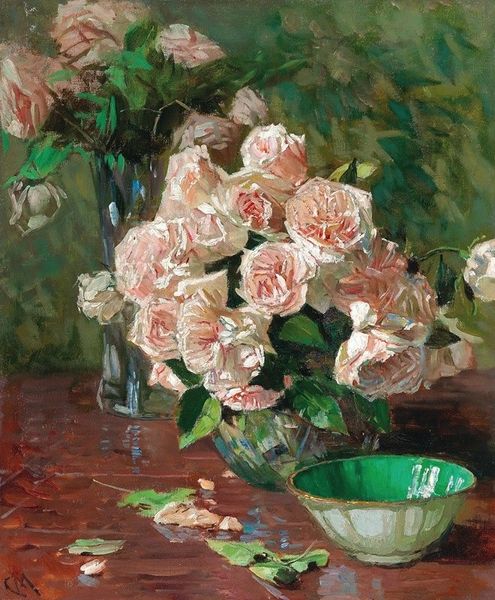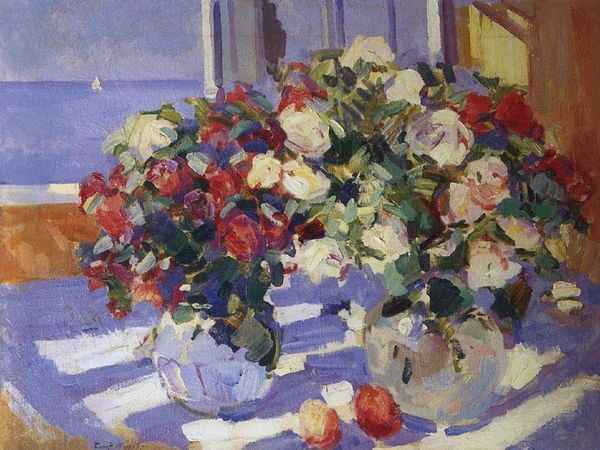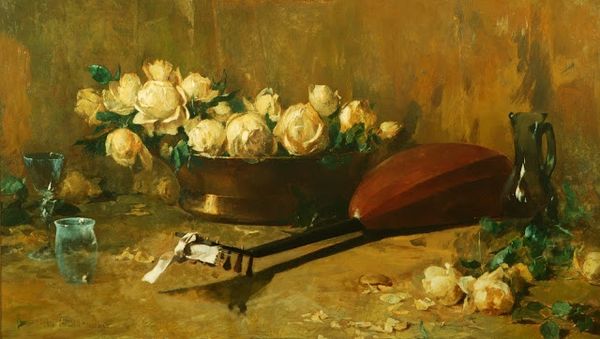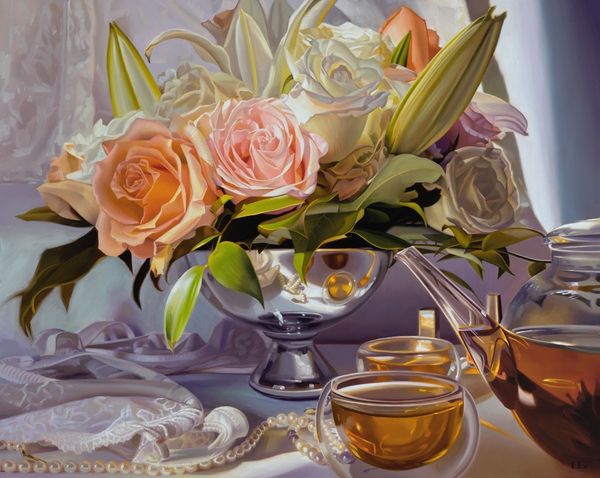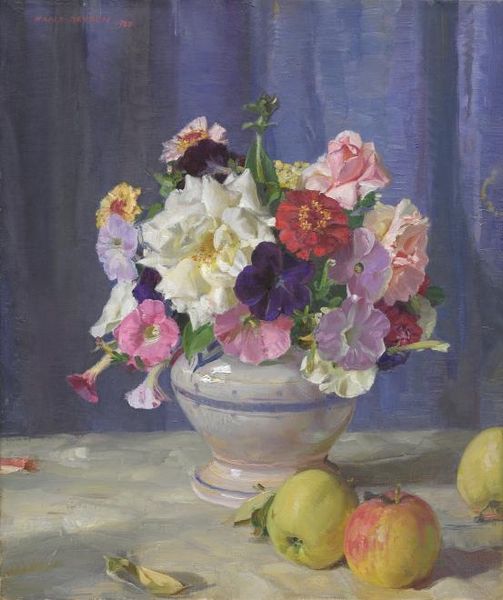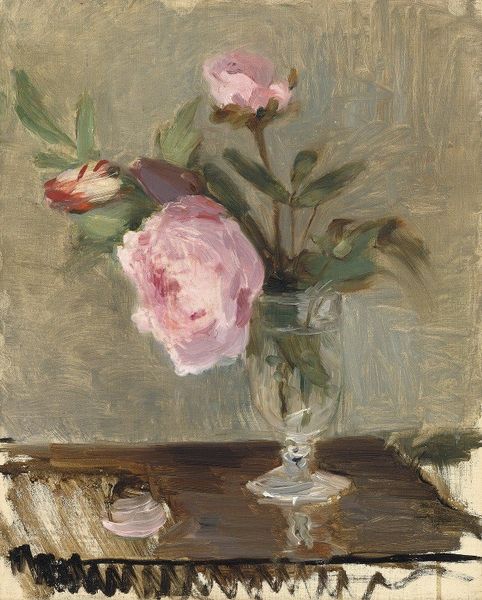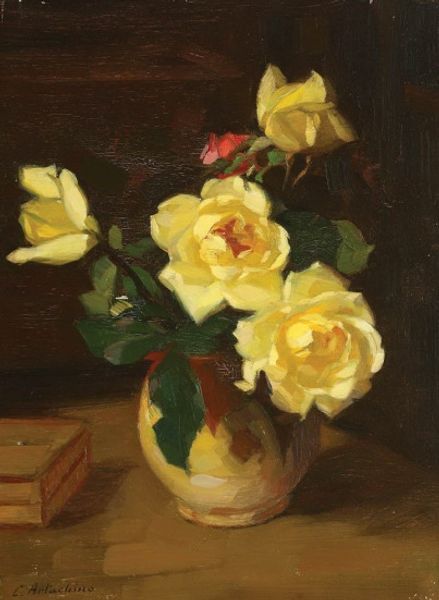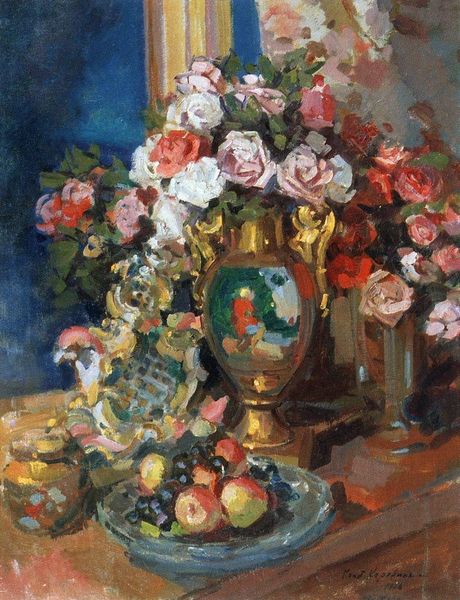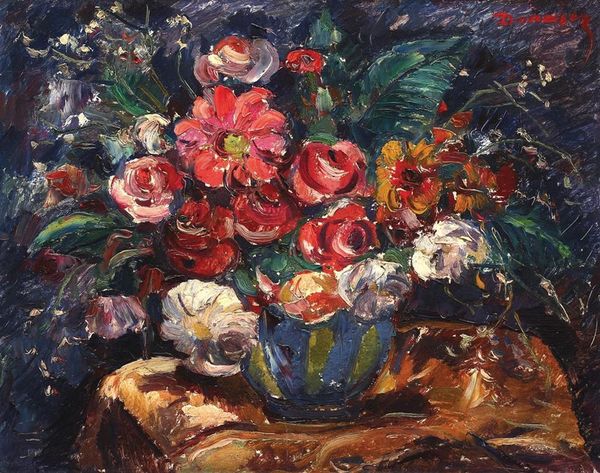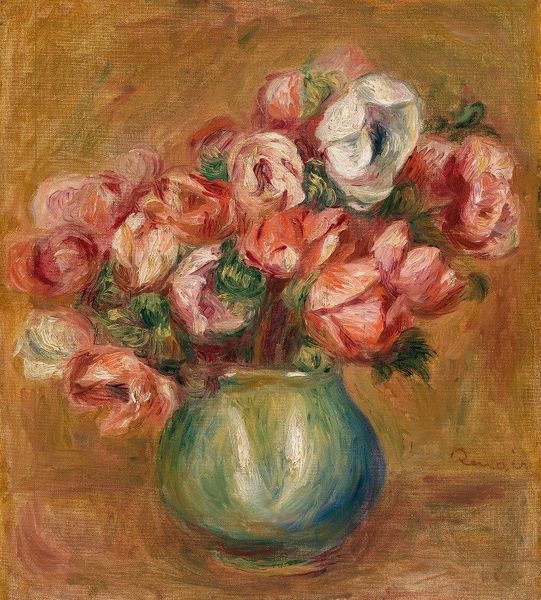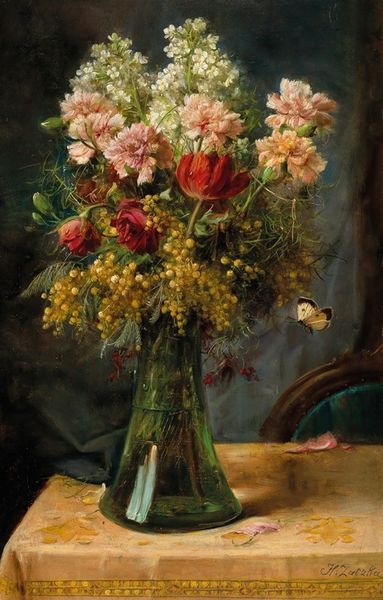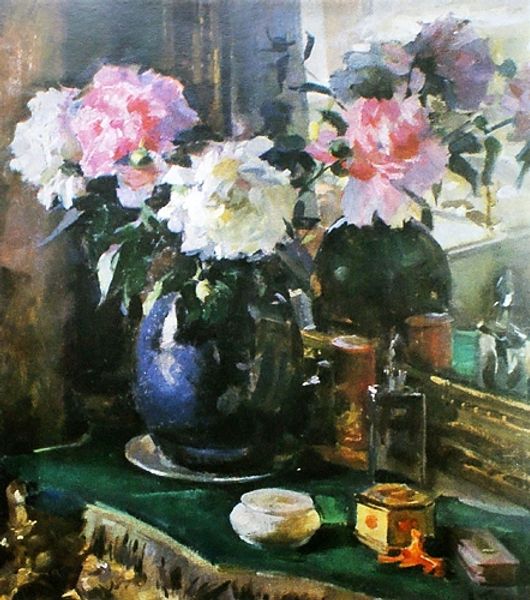
painting, oil-paint, photography
#
still-life
#
painting
#
oil-paint
#
flower
#
photography
#
oil painting
#
realism
Copyright: Pino Daeni,Fair Use
Curator: Oh, look at these roses! I'm just going to jump right in: their arrangement, and especially that light—it's like a moment stolen from a dream. Editor: Stealing moments is exactly the point, I think. This oil painting, most likely done sometime in the late 20th century and attributed to Pino Daeni, epitomizes a certain kind of romantic, even idealized vision. Think of it as a visual poem to domesticity, but is that an oppressive framework? Curator: Hmm. Well, before we dive into frameworks, can't we just bask a bit? The light isn't just soft, it feels emotionally charged. And those roses... "Long Stemmed Lovelies," if I'm reading the notes right… They’re like pink whispers on a white linen cloth. A visual hush. The glint from the coffee pot at the upper left draws the eye around to those blossoms and completes the story of a breakfast scene, maybe? Editor: But a story *told* a particular way, right? Roses have always carried cultural baggage; representations of feminine beauty, the fleeting nature of youth, but in the context of "lovelies", how does that tie into expectations of beauty? Where is the power here? Are they symbols of affection freely given or symbols of possession? Curator: Whoa, heavy thoughts for a still life! For me, I get a feeling of quiet, shared space, even tenderness. I mean, look at the brushstrokes – so free, so alive! Each rose seems to almost breathe off the canvas. Maybe that’s the true loveliness? That defiance of stillnessthrough motion. Editor: Absolutely, there is skillful motion here and these were produced for wide distribution of imagery. Daeni carved a career in commercial painting and then sought the fine arts field where his skills were well suited, if that context means that the artist intended to promote romantic tropes within capitalist structures. In addition, flower paintings have had historically specific patronage, by gendered elites within particular political systems. That means they represent complex and embedded meanings that go beyond face value. Curator: See, now that's a side of this dreamy painting I hadn't considered, but it feels like looking into another, deeper reflection. To be sure, this work has all the softness, sure. But behind those lovelies, something more angular and sharp is going on—isn’t that something, to feel its subtle unease behind this painted reality? Editor: It makes all the difference in how we choose to look, doesn't it? Even at the most familiar and comforting images. Thanks for taking the journey.
Comments
No comments
Be the first to comment and join the conversation on the ultimate creative platform.
